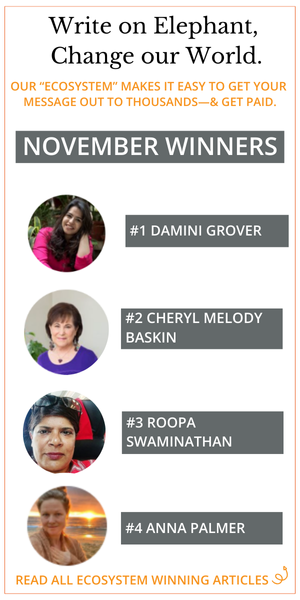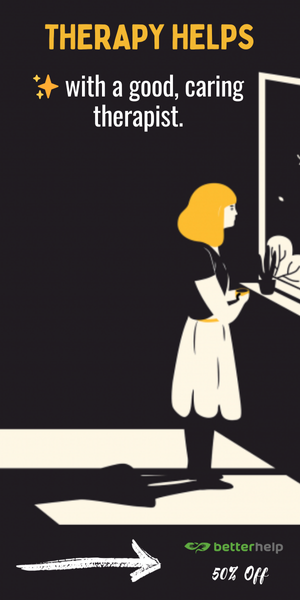*Author’s Note: this post is not intended as a coping mechanism for anyone who has unfortunately suffered a loss due to COVID-19 or has experienced major trauma related to COVID. My heartfelt thoughts and prayers go out to all those who’ve suffered or watched loved ones suffer as a result of this pandemic. I also want to acknowledge that a number of people are more worried about basic sustenance and survival needs at this point, and that this article may not resonate with them.
~
Winter is here in the Northern Hemisphere, and the holiday season is upon us.
Yet this year, we are unable to rejoice in this knowing. Too much has happened already, and too much continues to happen. It has been a whirlwind of a year, to say the least.
The possibility that this year (a first for many) we may not spend the holidays with loved ones is worrisome and comes with a hefty emotional toll.
Already, many families in the United States are planning on having their first Thanksgiving apart at the end of this month, and the thought of that alone is a trigger for exacerbated anticipation of spending Christmas and New Year’s distant as well.
Add to that yet another spike in the number of infections, along with the possibility of another partial or perhaps even a full lockdown (which is already underway in some parts of the world), our mental and emotional capacity may be maxing out soon, if not already.
The reality of a prolonged pandemic can emotionally, mentally, and even physically translate into a perpetual battle ground for mental health and well-being.
In light of these stressors that endanger our mental health, and even if only intermittently (for those of us who experience mental health challenges episodically), I have decided to share a coping approach that I have put together as result of coaching sessions with clients addressing this challenge.
This coping approach came to be known as the “Climbing the Coping Ladder” analogy. It has been put to the test and proven effective by my clients, so I am hoping that it may also be of use to others as well.
Steps to Climbing the Coping Ladder:
1. Acknowledgement
This is the first and most important step, and one that serves as the antecedent to any “coping.” Acknowledging the current state of the world—the collective anxiety and the prolonged state of this global ordeal—is key in setting the scene. And the scene is the collective condition shared by the entire human race, in which we are all experiencing the same fate, whilst keeping in mind that, undeniably, it is affecting different parts of the world at varying intensities, particularly economically marginalized communities and countries.
Supplementary to this awareness is understanding that there is an extraneously imposed situation, one which we have no control over, and one that poses an insurmountable challenge that cannot be taken on by any individual on their own. It requires science and it requires collaboration. No person can set off on their own and conquer this virus.
Thus, acknowledging that the situation we find ourselves in is something beyond our control is crucial. However, differentiating control from a response is equally crucial if not more important; we may not be able to control a situation, but we have the ability to choose how we respond to it. Of course, it is not easy to make that conscious choice—it requires effort.
We can find the motivation to make this effort by realizing that the awareness of our ability to choose how we respond provides us with an alternative response choice that may serve us better, rather than our immediate reaction to lacking control.
For example, we can choose to respond in a way in which we are no longer feeling like a victim to circumstances beyond our control, and are instead actively participating in choosing our state of mind in coping and facing the situation. Effectively, although we lacked control over the situation, we have regained control over our response to the situation.
This means we are also acknowledging that there is a way to climb out of negative feelings and emotions that snowball into further negativity and emotional pain. We are now finally manifesting and seeing the ladder, which is the critical initial step, because without seeing it first, there would be no way of climbing it to cope.
2. A Mindset of Willingness
The momentum of shifting from acknowledgment to the action of coping requires this second step. Imagine this as the force of movement and energy it takes to lift our first foot off the ground, hold on to the ladder, pull ourselves up, and get our second foot to follow.
Now that both of our feet are on the ladder, we are likely to face two options. We can look up, see the road ahead as daunting, and look back down to see how much closer we are to the ground, and how much easier it would be to just get off and get back to where we were. Or instead, we can look up, although we see a long road ahead in the climb, and trust the knowing that it will take us to a better place and it will be worth it; and so we actively choose to put in the hard work.
In this journey, it is important to understand that there is not one final destination. The ladder is made up of “pit stops” on the side that we can step off of and “take a break” or “hang out” until we are ready to move up the next steps. For some, they may travel up the ladder faster than others. The important thing is to accept and honor one’s own pace. Otherwise the process will not feel intrinsically motivated, and therefore less likely experienced from a mindset of active choice and willingness. Instead, it will risk feeling externally imposed—which would threaten the sustainability of the process or the climb, by way of threatening our commitment and discipline.
3. An Attitude of Commitment and Discipline through Acceptance
An attitude of commitment and discipline goes hand in hand with a mindset of willingness. Yet, they are not the same. Think of the former as having a boat, and the latter as the perfect conditions for that boat to float and sail in the right direction. If we have our willingness but lack the commitment and discipline, we are not likely to advance, and we might even get sucked in by a vortex of doubt and procrastination that eventually depletes our will.
The perfect conditions of commitment and discipline can manifest as result of finding our intrinsic motivation. Finding our “why.”
In this case, it would be having (or developing) an inherent desire for choosing to overcome the negative emotions and perhaps the debilitating sadness of living through this pandemic, and in particular, dealing with having to spend important holidays under unimaginable conditions and being far from loved ones. This means that although we are sad and frustrated, we are first and foremost accepting of this reality, and second, we are committed to letting go of these negative emotions.
The emphasis here is on accepting reality—coming out of the denial or rejection phase.
Some of us have gone into what I regularly refer to as “Ostrich Mode.” We buried our heads in the sand and hoped that by the time the elections were over and the holiday season was around the corner that this nightmare would all be over and we could come up for air. So you can imagine how those of us who have done this might feel at this point. Hence why acceptance would be a first-priority step for someone in this situation.
The more we fight against something we have no control over, the more helpless we realize we are and the more frustrated we will get. Coming to terms with it will enable us to accept that our negative emotions don’t serve us any good, and dwelling on them is not going to alter the outcome. So we accept letting go.
At this point, we should check-in with ourselves to see if we still have any resistance to the idea of climbing the ladder. If we find it we still do not feel an inherent desire to let go of our negative emotions, then we either have not directly aligned with our “why” or we have not been able to accept the reality of the situation.
I would invite someone who is still “not there yet” to write down on a piece of paper what they would gain by accepting letting go, and what they would gain if they continued to hold on. Comparing the visually attained perspective of how letting go would serve them better is powerful.
Once we have reached acceptance of our reality, of letting go of control, and of our negative emotions, we will be able to channel our commitment and discipline to move up the ladder.
Acceptance does not mean accepting defeat or feeling weakened. By contrast, acceptance allows us to free up weight that is holding us down, and enables us to become more flexible, more adaptive, and, ultimately, more resilient.
For instance, it could be accepting that we are not able to gather with our loved ones this Thanksgiving or Christmas; and instead of fighting against the idea, and working ourselves up with all the frustration and negative emotions that come with it, we can decide to let go of a situation we realize we have no control over. To let go of our fight and push-back against it, and to be with the reality of it in order to accept choosing to let go of our vested negative emotions.
By first coming to terms with accepting this, we will then be able to adapt and become resilient.
4. Adaptability and Resilience
If you bend, you won’t break.
Have you ever noticed how after a storm some trees are uprooted or broken while others seem just roughed up without snapping off? And how grass is only flattened during a storm, and with time it bounces back?
As people, we are similar to plants; some of us are too rigid, while others are more flexible, bendable, and thus unbreakable. We tend to be too rigid when we are refusing to adapt, when we are change-resistant. This is reiterative of the previous step of acceptance. When we are change-resistant, we also lose our ability to be resilient.
Resilience requires adaptability. These two concepts are inseparable; we cannot have one without the other. For that reason, at this step it would help to ask ourselves, “Have I been change-resistant or have I adapted to the best of my ability at this point in time?”
The key words being “best of my ability at this point in time,” because adaptability is not static and it requires constant upgrade. Honoring our adaptability pace is also important, as some of us may require more time than others. But the important thing is to have the openness to adapt and being consciously aware of practicing that flexible mindset.
So how do we adapt and become more resilient? First we will have to develop the awareness for that need, which hopefully we have achieved at this point. Second, we have to be resourceful and look for opportunities.
5. Resourcefulness and Looking for Opportunities
So far, we have developed a will to change our negative emotions around the idea we may not get to spend the holidays with loved ones this year. We have also accepted that this is something beyond our control, as well as that we must let go of the negativity surrounding the issue by adopting an attitude of commitment and discipline to do so.
We’ve then accepted that we need to be adaptive and resilient in facing this challenge. Now what?
At this point, it is about finding the right resources to support us throughout our adaptation and resiliency phase. This requires asking ourselves, “What can I do (or what is within my reach) to make my situation better?”
As an answer to this, one of the main themes that emerged from my coaching sessions was creativity, and particularly, creativity through technology or DIY projects.
In this day and age, there are many ways to be creative virtually. We can be resourceful by connecting, gifting, and even in hosting virtual activities and celebrations. There are also a number of resources available online to help plan virtual holidays this year; a quick Google search for “virtual Thanksgiving” or “virtual Christmas” ideas yields many options to discover.
So ask yourself the same question and see what comes up for you. Perhaps you can even share your ideas in the comments section to inspire others as well.
6. Patience is a Virtue…Nope, it’s a Resource
Aside form being resourceful and creative, it is important that throughout this climb, we continue to ask ourselves, “What resources do I need the most to cope? And what resources do I need first?”
If the answer is “acceptance,” then we need to go back to step three and work on that. However, many at this point of the climb tend to answer “patience.”
The patience resource is for someone who has already accepted the reality and scope of this pandemic, but also has what I call “a commanding perspective over the situation,” or the knowledge that this is temporary and will not define the rest of our existence. Yet, they need the resource of patience to be more tolerant of the pandemic’s timeline and the fact that it has extended reach into our holiday season.
Having the awareness that this might be a resource we need or we are running low on is half the battle. The second part is gaining strength by popping a “mental pill.”
A mental pill is a phrase or statement that one repeats to themselves when their patience fuel radar indicates they’re running low. The “pill” is developed in a coaching session based on my clients’ goals, and each client has a “prescription” that resonates with them the most. Here are some examples of mental pills for patience:
>> “This is only temporary; it will not be like this forever.”
>> “I will not let this situation define who I want to be as a person.”
>> “Looking back at history, they have also lived through difficulties.”
>> “There are people suffering more than I am throughout this pandemic.”
>> “At least we have technology to connect with our loved ones.”
>> “I choose to focus on hope and seeing good things instead of despair and frustration.”
>> “Time is an illusion; a year passes by so quick.”
>> “I’d rather wait it out than risk the health of my loved ones.”
>> “I will choose to learn to live with it rather than impatiently wait for it to go away quickly.”
>> “I understand and accept that external circumstances do not operate on my personal timeline.”
In the above examples, we are invoking the power of patience as a resource to continue our climb to the next step on the coping ladder.
7. Flip the Script
When we flip the script, we basically re-wire our neurological pathways to perceive and make meaning of the external world differently. This means we force new neurons to fire up to form new pathways or thinking patterns. The more we fire up the new thinking patterns, the more those pathways will be triggered when we experience the same external events.
This is usually done on a deeper level with the help of a coach, but can also be started by asking ourselves, “Is there a different way for me to interpret this event?” “What am I not seeing?” or, “What do I need to look beyond?”
Usually the answers to these questions would require the person to zoom out from a tiny perspective to incorporate a wider and multi-angled view on events. For example, we can flip the script on not spending Thanksgiving with our loved ones by thinking instead, “Well, at least I still have my loved ones safe and healthy, while many have lost their loved ones.”
Another flip would be to think, “I would rather choose the health of my loved ones over being with them this holiday season,” or “I am willing to spare this Christmas being far from my family in return for more holidays to come with them in good health.”
Flipping the script is helpful, especially when we feel overwhelmed by the reality of the situation. Reminding ourselves of the priority of keeping our loved ones healthy can be integral in coping with being far from them this upcoming holiday.
8. Gratitude
The ultimate step in climbing the coping ladder is practicing gratitude.
Being thankful for the things we have and noticing the small things in life that bring us joy can help us practice gratitude. For instance, being thankful that we live in a technologically equipped era that enables us to connect through high-quality video and not just audio. Imagine if we were living this pandemic in the 80s or 90s or even the early 2000s; things would be much more difficult.
Getting to the top of the ladder is not easy, but it is worth it. The view from up there will give us a long-lasting perspective on appreciation and humility in realizing the grand scheme of this pandemic.
The more we practice gratitude, the better we get at it (remember those neurological pathways), and the more natural it will become with time.
As we practice gratitude, we begin to realize the pandemic’s ripple effects and implications beyond the holiday season, beyond its restriction of spending time with loved ones. It allows us to see the the mass suffering and loss experienced by humanity as well. We begin to see the perils of the pandemic on the grandiose scale of human life, thus shifting the focus from “me” to “us.”
Appreciating what we have, rather than what we do not, is a continuous life lesson that presents itself in various shapes and forms. If we are able to practice gratitude in the most challenging times, we will be able to master that challenge and grow stronger through it.
And let’s remember, the holiday spirit lives within us. It is an active choice to either give it up and fall victim to extenuating circumstances beyond our control, or choose to make the best out of what we have and prioritize the health of our loved ones.
Wishing you all health and love.
~
If you or someone you know are experiencing mental health challenges, you are not alone. There are ways to deal with this, please use the list of resources below to get the help you need:
National Suicide Prevention Lifeline
National Alliance on Mental Illness
National Institute of Mental Health
~


 Share on bsky
Share on bsky





Read 4 comments and reply